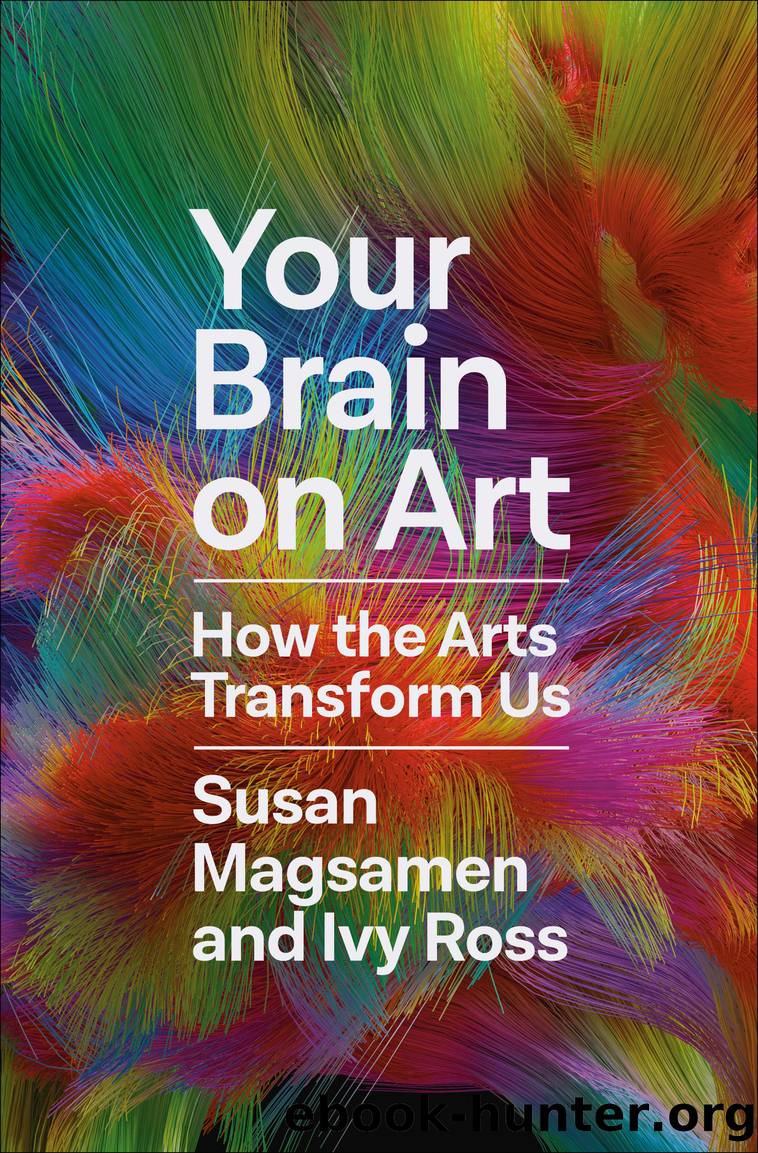Your Brain on Art by Susan Magsamen & Ivy Ross

Author:Susan Magsamen & Ivy Ross [Magsamen, Susan & Ross, Ivy]
Language: eng
Format: epub
Publisher: Random House Publishing Group
Published: 2023-03-21T00:00:00+00:00
Playful, Artful Learning
Though it gets buried in adulthood, the urge to play exists in all of us. It has been a major part of how weâve evolved as a species. As Plato famously said, âYou can discover more about a person in an hour of play than in a year of conversation.â
Play is a key component of the arts and aesthetics in myriad ways. Art and play are like two sides of the same coin, with play being a part of artistic expression, imagination, creativity, and curiosity.
Roberta Michnick Golinkoff, a professor of education at the University of Delaware, and Kathy Hirsh-Pasek, a professor in the Department of Psychology at Temple University and a senior fellow at the Brookings Institution in D.C., have identified play as a key ingredient for learning. The title of their 2003 book pretty well sums up their philosophy and their years of research around play and learning. Itâs titled: Einstein Never Used Flashcards: How Children Really Learn and Why They Need to Play More and Memorize Less.
âIf youâre not having a good time, youâre really not learning,â Roberta told us. âAnd there are so many ways in which we can infuse play into classrooms and informal learning environments.â This is supported in the research on the neuroscience of play and learning. Play, the research notes, is universal to our species, and when humans play it positively influences both their cognitive development and their emotional well-being.
There are, Roberta and Kathy point out, two major kinds of play, free play and guided play. Free play is under a childâs control and not designed to satisfy any external goal. Kids excel at this. Think about playing dress-up or make-believe. Play with an adult who has a learning goal is guided play. When itâs done well, it supports the learning of new skills.
Roberta and Kathy use the example of bowling. In most alleys, you can ask for bumpers to be raised so that the ball never rolls into the gutter. When a person is first learning to bowl, the bumpers help to make the skill more fun if they get to discover the joy of knocking a few pins down. âWith guided play, we set up the environment for kids so that they can learn different things,â Roberta explains.
When children have an opportunity to learn in a playful way where they have some agency, where theyâre active, where they get to be involved and collaborate, it leads to the gold standard of learning: transfer. âYou can take something you learned in one context and apply it to another, and when you can create environments in which these things are exemplified, thatâs when you get real learning,â Roberta says.
One teacher they mentioned set up a center with all kinds of writing implements and paper. âNow, this was kindergarten before kids really knew how to write,â Roberta says. âBut what did it do? It spurred writing during their free time. They would come up and ask the teacher: âHow do I write
Download
This site does not store any files on its server. We only index and link to content provided by other sites. Please contact the content providers to delete copyright contents if any and email us, we'll remove relevant links or contents immediately.
The Social Psychology of Inequality by Unknown(2987)
Make Comics Like the Pros by Greg Pak(2883)
Stacked Decks by The Rotenberg Collection(2843)
Purple Hibiscus by Chimamanda Ngozi Adichie(2739)
The Queen of Nothing by Holly Black(2542)
The Art of Doom by Bethesda(2130)
Life of Elizabeth I by Alison Weir(2051)
Putin's Labyrinth(1986)
The Power of Habit: Why We Do What We Do in Life and Business by Charles Duhigg(1970)
Drawing Down the Moon by Margot Adler(1842)
Things Are What You Make of Them: Life Advice for Creatives by Adam J. Kurtz(1835)
Agency by William Gibson(1800)
Wall and Piece by Banksy(1797)
Art Of Atari by Tim Lapetino(1771)
Teaching to Transgress: Education as the Practice of Freedom (Harvest in Translation) by Bell Hooks(1738)
The Beatles Lyrics by Hunter Davies(1694)
The Pin-Up Art of Bill Ward by Bill Ward(1674)
Only What's Necessary: Charles M. Schulz and the Art of Peanuts by Chip Kidd(1667)
The Andy Warhol Diaries by Andy Warhol(1576)
